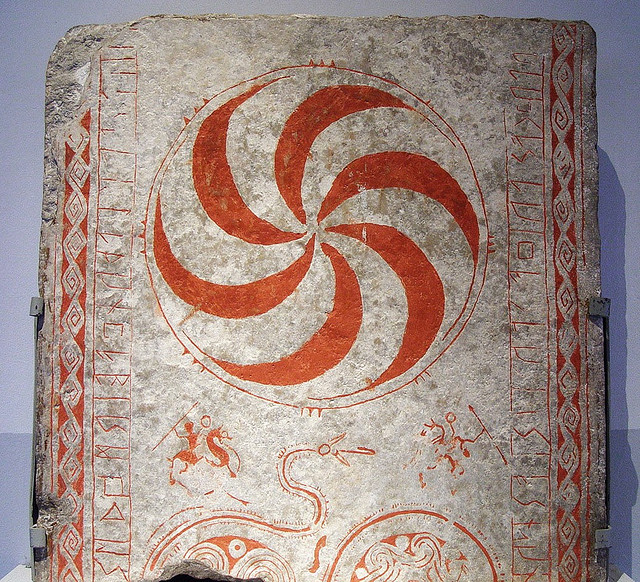by Gun Westholm
 Introduction: When the Viking Age began in about 750 AD, Scandinavia
was among the last of the heathen outposts in Europe along with the
Baltic, Russian and Slavic areas east of the Elbe. christianity had
slowly spread from the Middle East, Egypt, the Roman Empire and the
Byzantium area (4th century), to the realm of the Franks and, during
the 6th century, further to England and Ireland. Parts of the Germanic
area were christianized during 7th century, and in the middle of 8th
century the large Carolingian kingdom was created forming a cohesive christian area from Italy in the South to the Slavonian region in North.
Introduction: When the Viking Age began in about 750 AD, Scandinavia
was among the last of the heathen outposts in Europe along with the
Baltic, Russian and Slavic areas east of the Elbe. christianity had
slowly spread from the Middle East, Egypt, the Roman Empire and the
Byzantium area (4th century), to the realm of the Franks and, during
the 6th century, further to England and Ireland. Parts of the Germanic
area were christianized during 7th century, and in the middle of 8th
century the large Carolingian kingdom was created forming a cohesive christian area from Italy in the South to the Slavonian region in North.In Scandinavia belief in the Aesir Gods was the prevailing religion before the christian message slowly won territory during 11th century. Many believe that the religion of the Vikings arose as a unique phenomenon in northern Europe.
But the Aesir religion was a warrior religion that had several equivalents in both Europe and Asia, religions that had replaced other much earlier, peaceful beliefs with clear ties to agriculture and fertility. In these very old forms of religion, the chief god was often of the female sex – Mother Earth – and a good yearly crop and high yields from the livestock were the main purpose for worship.< br>Female goddesses dominated Europe’s and Asia’s religious beliefs until approximately 5000 BC, then a slow change seems to have begun. The fertile areas of the plains people were taken over by warlike nomads and cattle herders from the mountain regions. These tribes had male chief gods who honored warring activities and warriors who had fallen in battle. Later on some of the war gods came to be called Zeus, Jahve and Odin.
Outside Scandinavia, Odin was called Wodan/Wotan among the Germanic tribes, Godan among the Langobardi and Woden in England. Both Woden and Donar – Thor – are mentioned as early as the 6th century on the continent. Odin and Zeus have many common qualities, as do their respective wives Frigg and Hera. There are also resemblances between other Aesir Gods and the Greek Gods of Antiquity.

No comments:
Post a Comment